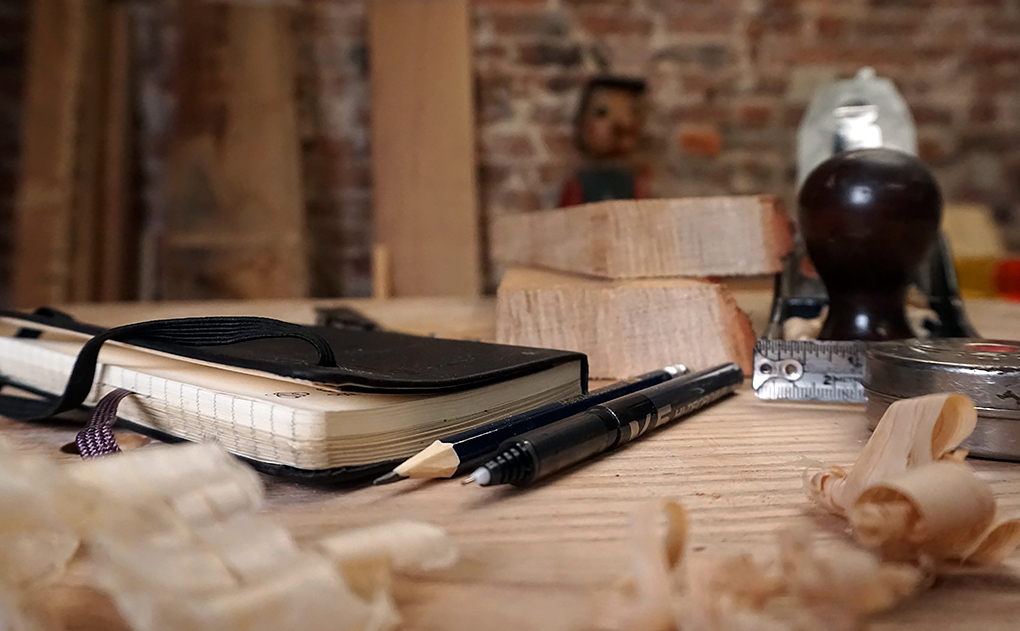
When you set out to build a piece of furniture do you look to someone else’s work for inspiration, or perhaps wait for a suitable plan to take your fancy?
It can feel limiting when you have the motivation to crack on, but aren’t sure what to build.
Or you know what you want you’re furniture to look like, but can’t convince yourself that once you’ve made your vision a reality, it’s going to look ‘right’.
There are many considerations to what makes ‘good’ design when planning your furniture. Some are mathematical, and others are practical, and over time we’ll have a look at several of them in more detail.
But to start with I wanted to give some thought to the more unpredictable factors. Considerations that have become a large part of my understanding of ‘good design’, but which are more rarely discussed.
These are the ‘us’ factors. The reasons that all design, no matter how masterfully conceived, is still subjective.
They can at first make the job of designing seem more complicated, but once they’ve sunk in, I hope they’ll boost your confidence instead. You’ll realise you’re not chasing the ‘perfect’ design, and you’ll give you’re expressive self a longer leash.
The ‘Us’ Factors Of Good Design.
Familiarity-
Familiarity is a strong one.
If you want to build furniture that people won’t hate, then stick to convention.
Most of us would look oddly at a five legged chair, but will accept the four legged one immediately.
Being ‘normal’ isn’t likely to excite us, but it is a safe bet if you’re looking to please the crowd.
Becoming familiar with a design will help us warm to it as well.
If you’ve ever had a friend piping on about a TV show, you might remember feeling dismally disappointed when you’ve finally got around to putting your feet up to see what the hype’s about. You find it odd, nothing like you expected and the simple task of watching becomes a chore.
But if you had enough snacks to make it worth sticking out, by the time you pulled yourself through to Episode 4, you may have accidently become a devoted fan.
You got used to the distasteful wardrobe, and accepted the unrealistic setting.
It became the norm, became familiar, and the (flimsy) story line got you gripped.
Familiarity can be as powerful as any mathematical formula in your furniture design.
Even when you want to challenge the norm, you can give people a little of what they’re used to, so that your piece can be seen as intriguing, rather than completely odd.
And if weird is your thing, then perhaps you need to keep getting it in front of people. Someone will eventually warm to it. The world always accepts a Picasso… eventually.
Association –
You can’t depend on familiar design to be a fail safe.
What’s normal to one will be alien to someone else, but it’s what we associate things with that makes it all really complex.
You may have a strong dislike of something that you’re familiar with, not because of how it looks, but because you’re connecting it with something else that you’re not keen on.
You could use Arts & Crafts detailing in your bookcase for example, to give it a pleasing finish. But then there’s always a chance that one of your friends is going to look at it and recall the fusty smell of a great aunt’s living room, and the hateful glare of her cat staring back from the shelves in the corner.
Or worse.
What we associate with what, can be unpredictable. We likely don’t realise it ourselves that we like or dislike something, based on a time, a place, or a person that we connect it with. But I think we all do.

What do you associate Classical ornamentation with? Old and formal, strong & imposing, cold & hard, beauty & awe?
How can association help with our furniture design process?
It helps remind us that we need to understand who we’re designing for. And it highlights why we can’t hope to please everybody.
If you’re designing for you, then do it to please yourself (and anyone else who’ll have to live with it daily).
It doesn’t really matter what anyone else would think of your eccentric colour choice.
The more useful aspect of association though, is when it can be somewhat predictable, and this is more likely to be the case when you understand the culture of who you’re designing for.
The use of fairly typical associations can add a bit of something else to our furniture designs, without becoming a copy or even close to the original.
It could be a very loose association, such as picking the colour purple because the piece should feel luxurious or regal, or choosing curves or wavy lines because the piece should be informal or playful.
Or, you might use something much more specific.
Borrowing classical proportions for example, or even using ornamentation from a particular classical order, could make your piece feel formal, even if the main look of the piece is very modern.
Influence –
I’m including influence here, because I think that to some extent at least, we look to outside opinion to help to determine whether we like something or not.
If a maker has the confidence to put a five figure price tag to their work, then it has to be good. Right?
Or if a piece is decorated with design awards, loved by your favourite celebrity or best friend, you’ll at least look twice at it. When in all fairness it may be perfectly uninteresting otherwise.
Influence is less useful when we’re at the drawing board, but it can help to highlight why ‘good’ design isn’t entirely about mathematics and practicality.

Mathematical proportions such as this golden ratio have formed a guideline to designers for thousands of years. Along with the ‘us’ factors discussed here, you should look to gain a basic understanding of these concepts to aid your furniture designs.
Good Design & Being Human
Design rules are always relevant, and if you’re not familiar then consider doing a quick search on proportion, scale, repetition, balance etc.
But it’s being human that keeps design in motion, or that’s how I see it anyway.
If you think about it, without our fickle ways, the question of ‘what is good design’ would have concluded hundreds of years ago. Reaching it’s pinnacle of evolution, with everything looking the same for ever more. Possibly with slightly altered dimensions as we grow gradually larger, and our things ever smaller.
But instead, what we choose to surround ourselves with, continues to change.
Design doesn’t evolve and slowly head towards a perfect result. It’s in motion, like the seasons, and we’re the force driving it.
Wanting to recapture a magic from childhood.
Not wanting to see ourselves become our parents.
Romanticising a time long gone.
Trying to avoid making the same mistakes in the future.
It might all sound dramatic, but our surroundings are, and always have been, a cross between practical fulfilment and self expression.
Furniture is an opportunity for practical art, and this is why despite the mass scale of flat pack solutions out there, there will always be a place for the small maker who’s bold enough, and has something to say.
So What Is Good Design?
Having all of this in mind might make starting a design for your furniture feel impossible. But really it makes things easier.
Good design meets it’s objectives.
That doesn’t mean that everyone loves it, or even likes it, only that it achieves what it sets out to do.
The more you hone those objectives, the more guidelines you give yourself, and the more interesting your piece is likely to turn out.
Lets say you’re designing a chair.
It’s going to be a good idea to ensure that it doesn’t collapse when you sit on it.
And it’ll be better still to make sure it’s comfortable as well.
But the thing that will make it most interesting, are the challenges you’ve overcome ensuring that it meets your objectives.
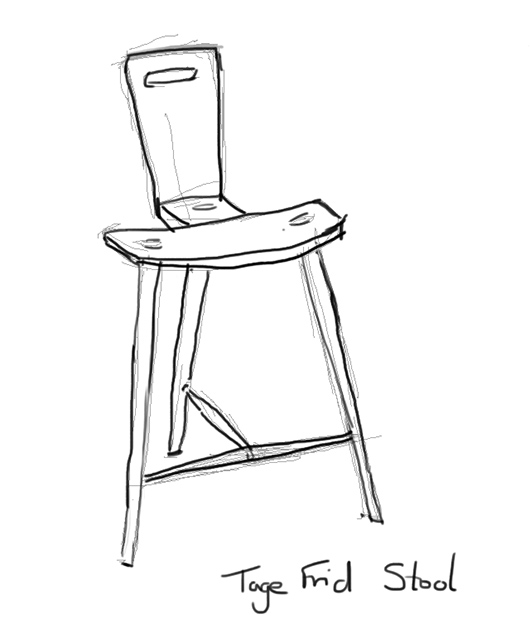
Three-Legged stool by Tage Frid. This has become an iconic design, which really comes to mind here. I sketched it because image copyright can be tricky, but a quick search online will show you the real thing.
Don’t just give it five legs because you want to be different. Make decisions based on who you’re building for, what’s important to them, and what you want to express yourself.
For example, you might have decided that a goal is to create strength whilst keeping materials minimal – now you have a good cause to consider three legs instead.
And your next step is to experiment with splay for that much needed stability and strength.
Your objectives can direct your furniture design in all manner of ways. They could be practical challenges such as the speed of the build, the budget, the tools used, or wanting to source all materials locally.
Or they can be about how people react to the piece – will it evoke a sense of grandeur, or perhaps playfulness?
And once you have your objectives to guide you, remember to use well known proportions, and ergonomic figures for additional guidance.
You don’t have to stick to the rules strictly, but it’s worth knowing what they are before you break them.

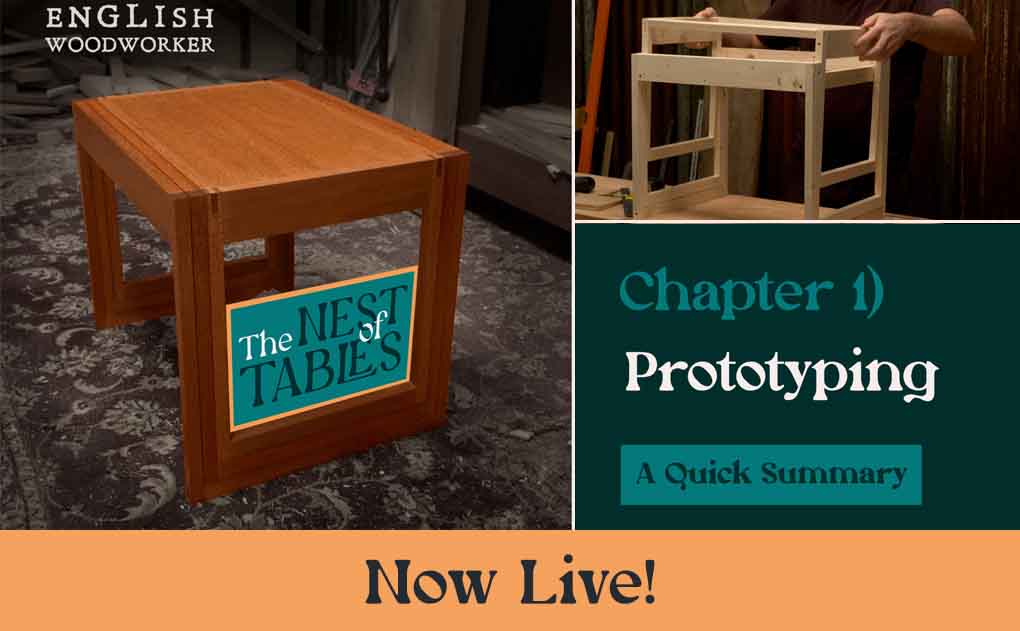
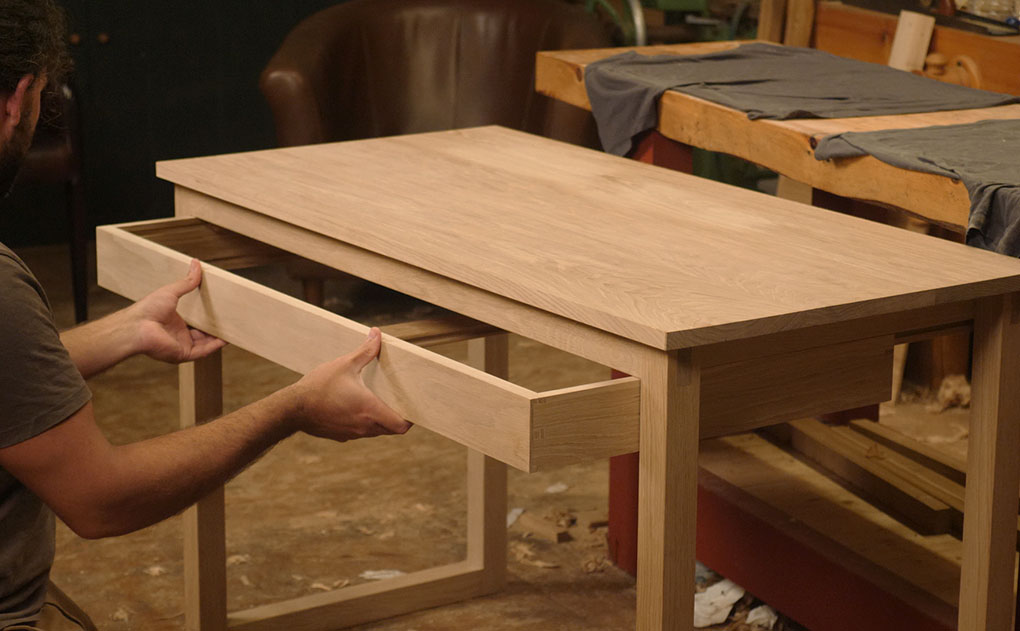
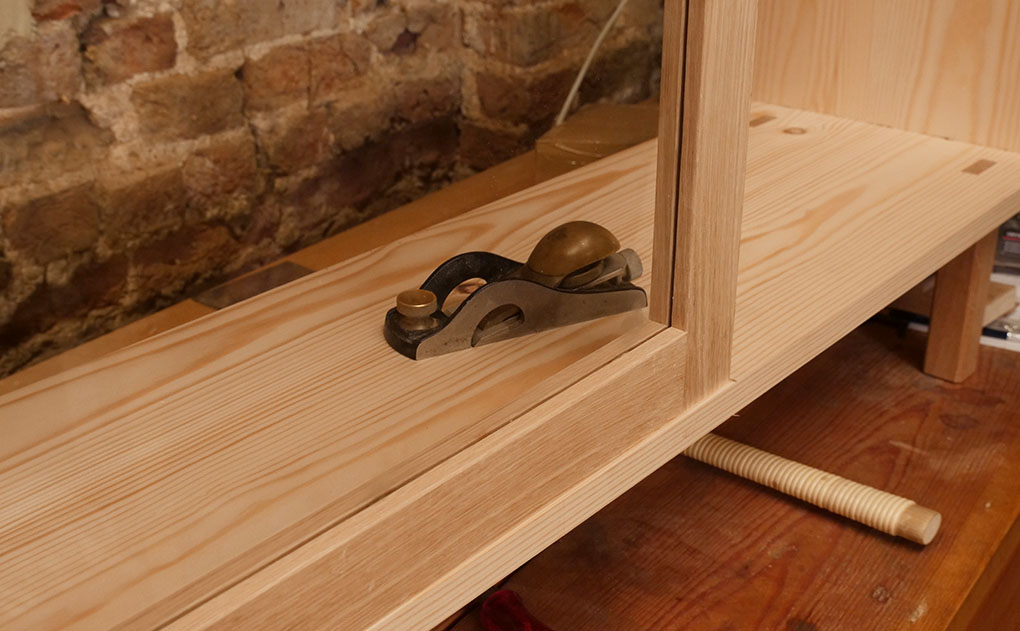
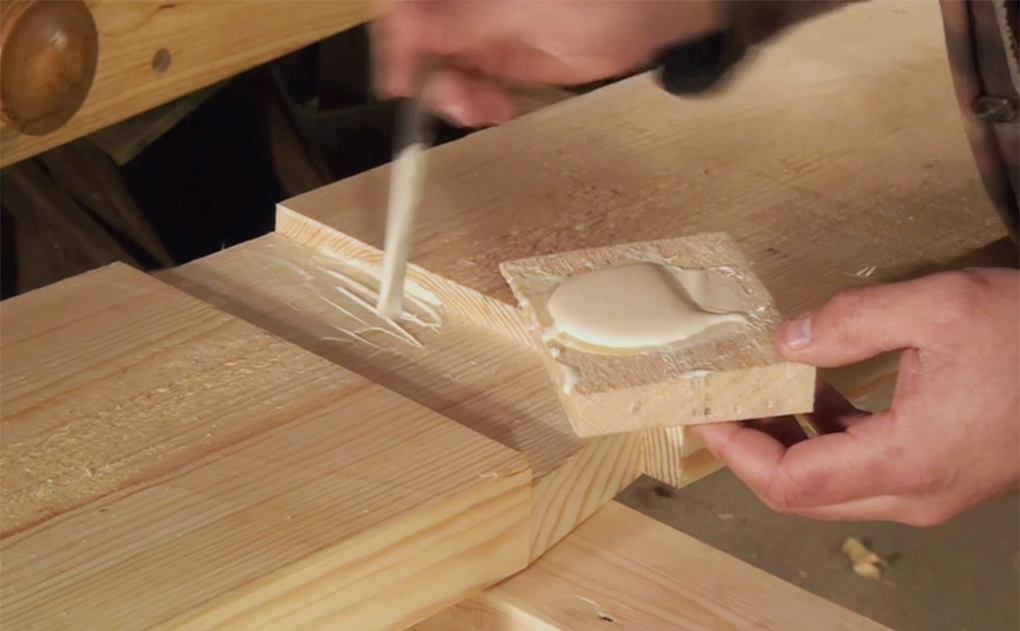
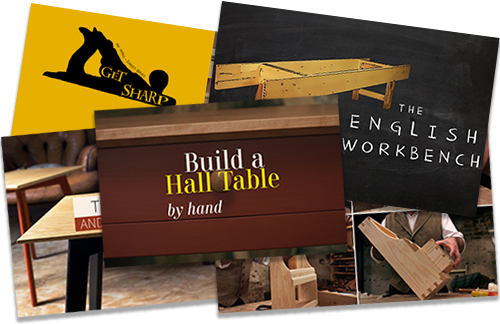
Thank you for this, Helen. Practical, easy to follow, useful, and interesting. I’m looking forward to more of your design ideas and examples, especially the notion that good design overcomes challenges; I’ve often felt that constraints are the driving force behind many good designs, and would like to hear more from you on this, and see some examples.
You did hit it on the head. I design a lot of different looking guitars, but you always need to take the familiar into count. Most of what I do has at least two or three really familiar aspects to it. My first one was my own design, really radical for an acoustic, most people thought it looked strange, but it didn’t take too long to talk them into trying it. However my latest have been a more traditional look and I can’t keep people from wanting to try it. See the difference. The first I was the one doing the talking, now it is the clients that want to talk about it.
Great article. Thanks for sharing your thoughts.
Nice guitar stool by the way! Now if I can put a guitar rack on the back…..
That is some excellent advice. Sounds like a class on design cleanly summarized .
I am still struggling with all those guidelines.
Nothing more scientific than if it’s pleasing to my eye, built strong with pleasing proportions, I’m afraid.
HaHa I normally make a rough drawing after its built. 😉
Excellent read Helen – enjoyed. One thing I admire in the designers I like is the distillation (like the Frid chair) – knowing what to take away – not the 3rd leg of course, but dumping the superfluous and getting to the essence. I see that from architecture to product or logo design. Probably good we all like different things though !
A really well written and uncommonly useful post. Thank you Helen.
Time then you lot to get designing . What can go wrong? Nothing.
Because even if it turns out a miserable failure it’ll also be a fascinating failure and strangely comforting to your fellow mortals who will love you for posting the gory details.
I myself like weird. Especially weird chairs. In my yoof I travelled a lot in Africa and used to marvel at the many strange chair designs (often communities seemed to have developed their own unique ones). You’d be amazed at how many ways there are to make a chair often out of little more than a stick and some old junk.
And yet for all our tools and knowhow we rarely seem to stretch beyond yet another dull old windsor or rocking chair. Kidding ourselves that the kids wont simply lob it in a skip nano-seconds after we’ve pegged it. I mean really. Is that all we’ve got?
So com’on people lets have some more weird! Or oddly alluring. Or strangely beautiful or even just plain crap. But your crap not anyone else’s The kids might even keep that because it reminds them of you.
Great article, Helen.
Another factor to consider in going with “familiar” is simply the fact that “familiar” furniture design has 6,000 years of trial and error going for it. Don’t reinvent the wheel.
There’s much to be said for that Derek especially if you need what you’re making and need it sooner rather than later. I’ve certainly wasted more than a few days trying to find solutions to problems that were actually solved hundreds of years ago if only I’d been able to find out how.
Yet as amateurs we’re not always in a hurry and the process of reinventing can be a very satisfying one
Nor also are all techniques potentially useful to woodworkers actually in the public domain. There are makers out there doing some spectacular things with plywood and acrylic resins and many more new materials often in combination with real wood. Naturally as working craftspeople they tend not to share their construction techniques which means we have to reinvent those particular wheels if we too want to incorporate such materials into our work in equally interesting ways. Just a few examples of why pushing boundaries can be rewarding and worthwhile.
There is also an argument that if we stop innovating we’ll actually be bringing to an end that rather wonderful 6,000 year period of trial and error. Not sure any of us would want to do that.
Thoughtfully written – I would add that it is also important to look outside of your own field for inspiration. I have noticed that even although I may make a table, it is more of a “feeling” I am chasing in the design, and in that I can take inspiration from people like Nigel Slater (a cook) or Dan Pearson (a landscaper/plantsman).
Landscape, pottery architecture even the seasons can all feed in and make better designers of us all.
As many of us know, IKEA is having some serious design issues in that several of their cabinet designs are tipping hazards and have killed or seriously injured several children. What might they be doing wrong, and how does one design furniture with safety in mind, while keeping aesthetics minimally affected?
I hadn’t read about these troubles but any tall piece of furniture will tip if a heavy enough child climbs up the front. Last time I put together Ikea cupboards / bookcases (a long time ago) they provided straps which were to be fixed to the top panel, the other end firmly being screwed to the wall. I imagine a lot of people miss out that step, perhaps because they don’t have a drill, but its important to do it properly so right size drill bit, right size plug, and right size screw. Non Ikea furniture should be secured in a similar way if not with a roof strap then perhaps with a screw through the frame near the top and appropriate packers between that point and the wall. Even if you don’t have kids of your own its a good idea to keep the unruly children of your visitors safe. Obviously the bigger and heavier the furniture the more substantial and / or numerous these fixings need to be.
Actually thinking about it some more if the furniture is sitting on the floor it’s the weight of the child that matters not the weight of the furniture so the fixings should be substantial enough to take that. And the condition of the wall needs to be considered. The fixing needs to be solidly into sound brick or a stud. Low wall mounted cabinets are a very bad idea unless you really know what your doing. And lastly if you buy commercial furniture and the wall fixings don’t look up to it get some bigger ones. And if in any doubt ask a professional rather than rely on advice from a stranger on a random website.
Good comments below. I should specify that the products IKEA is having problems with are their freestanding dressers and chests. I used the word ‘cabinets’, which could imply storage that, by default, is attached to walls. Sorry for the lack of imprecision.
Good comments below. I should specify that the products IKEA is having problems with are their freestanding dressers and chests. I used the word ‘cabinets’, which could imply storage that, by default, is attached to walls. Sorry for the lack of precision.
I enjoyed that Helen ,thank you .i feel a lot better about myself now